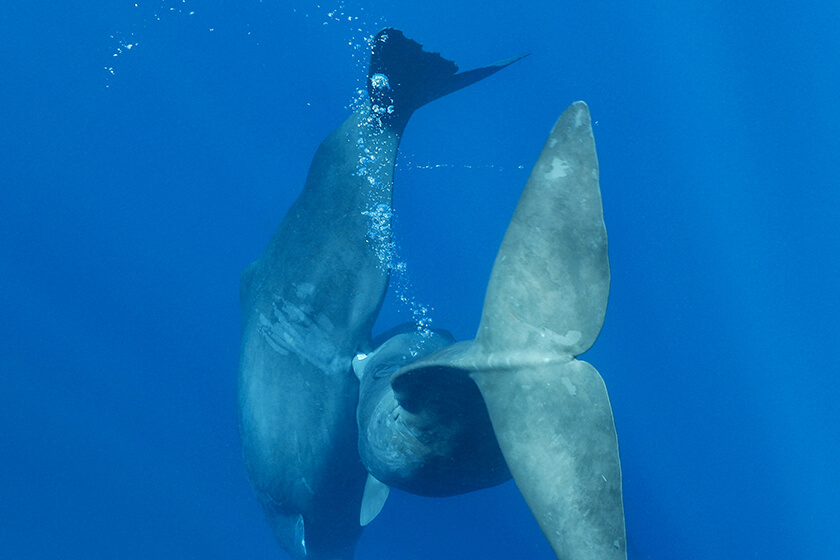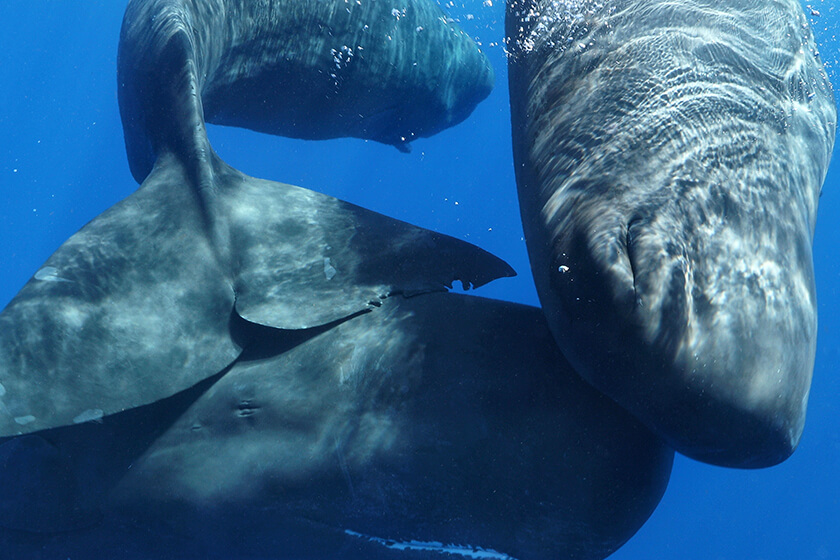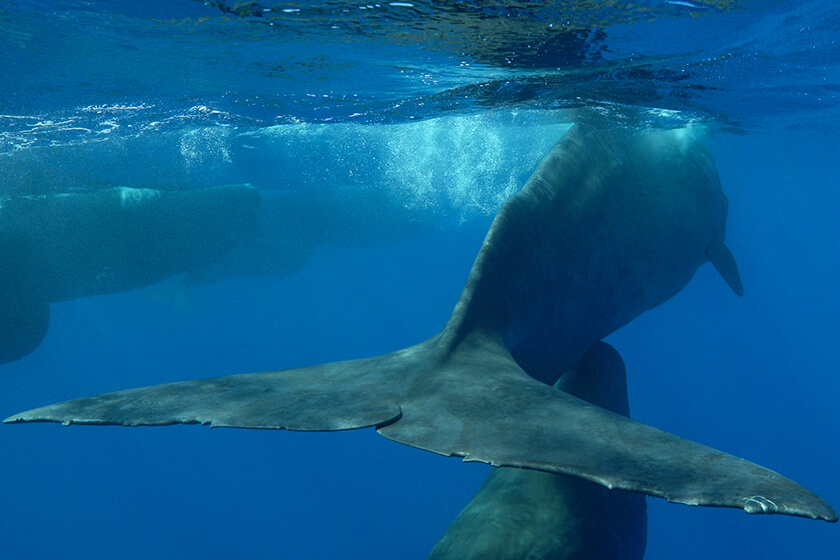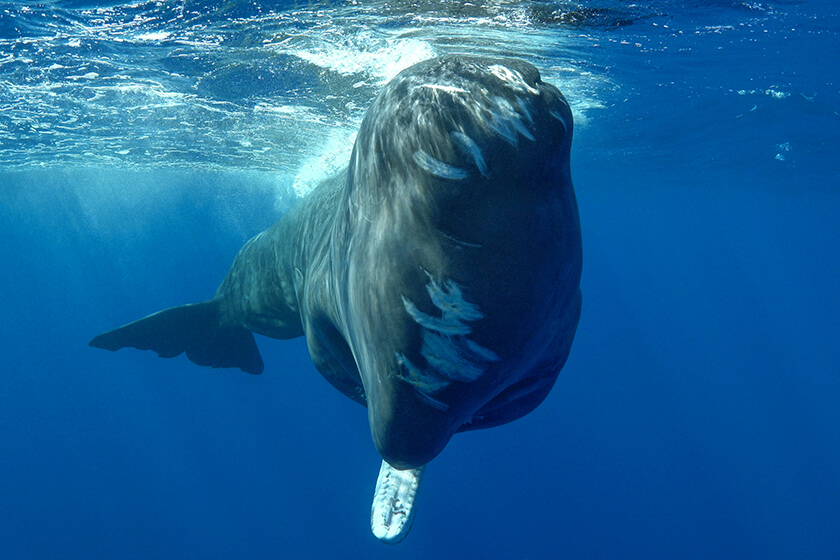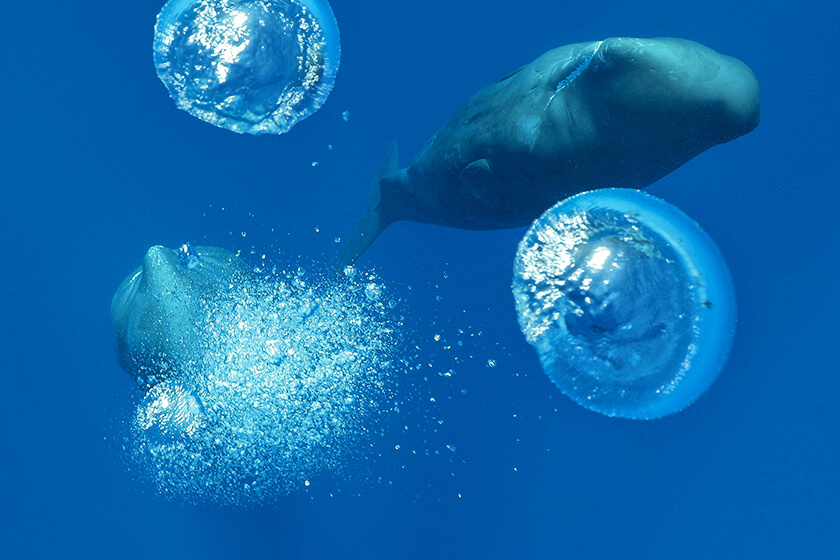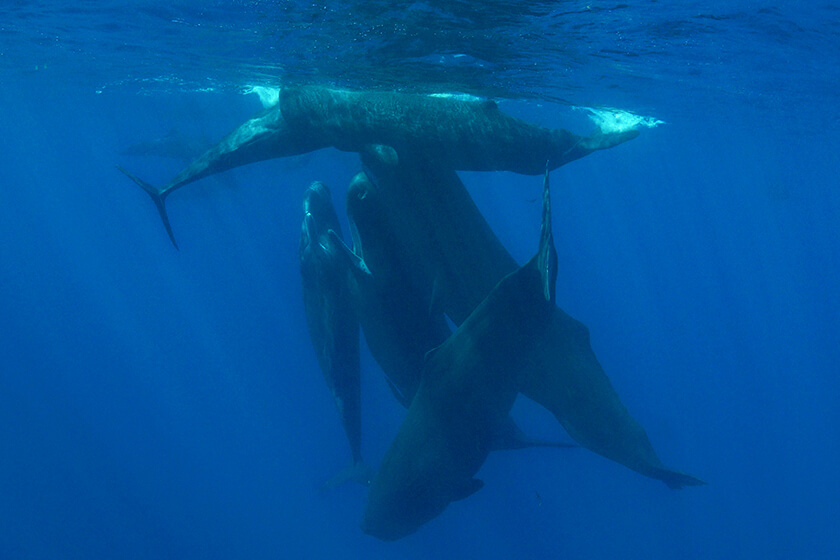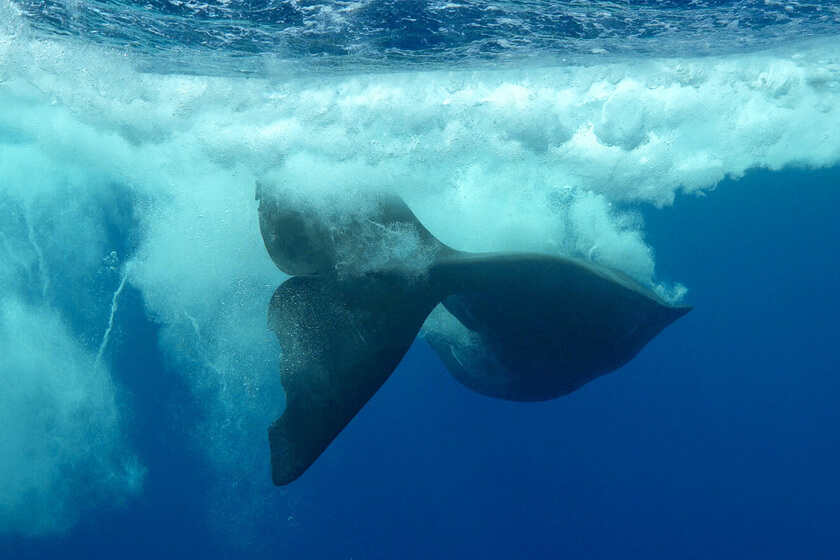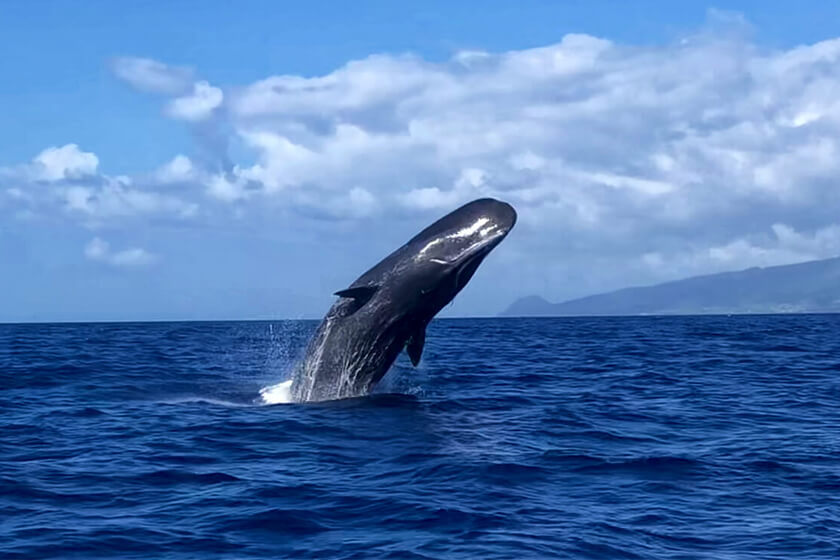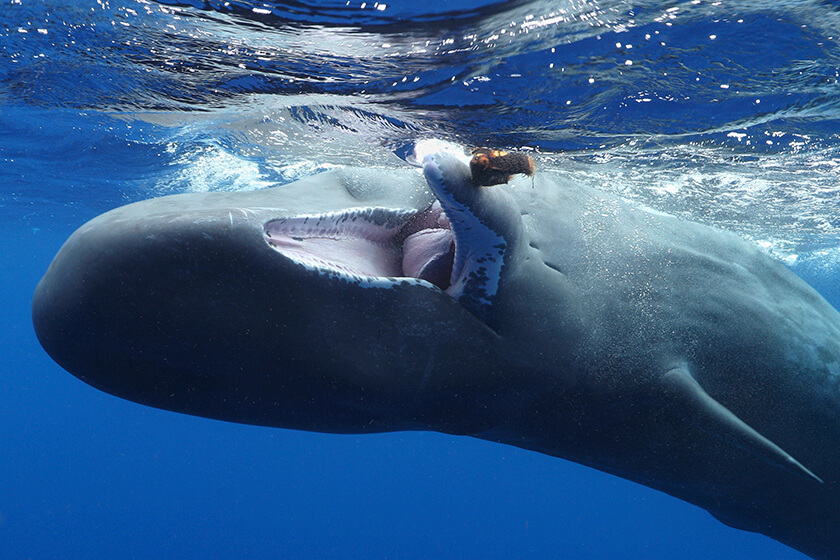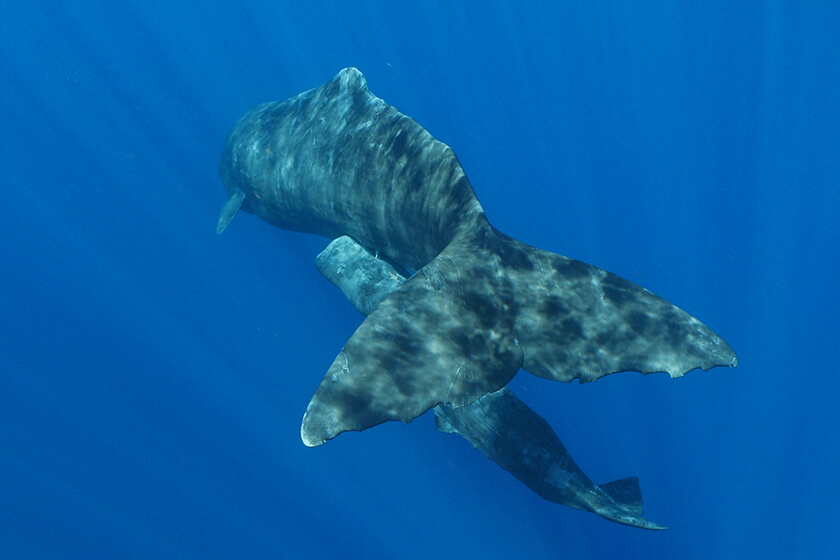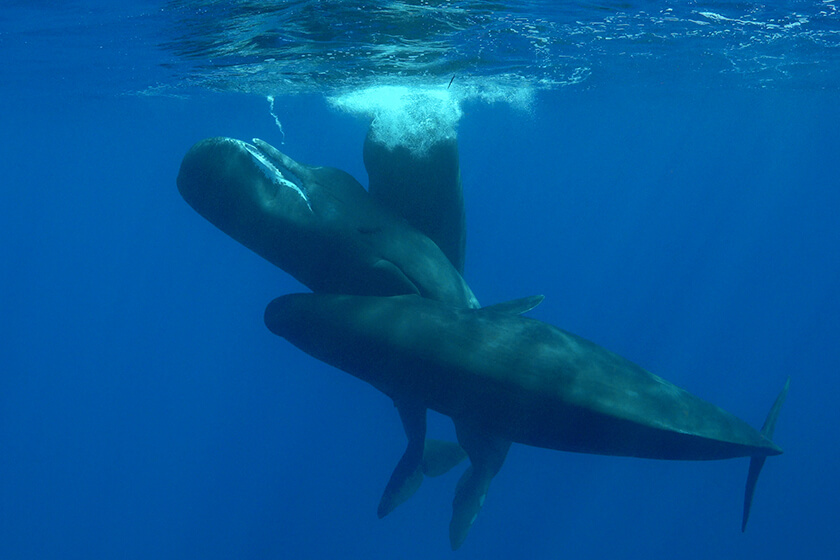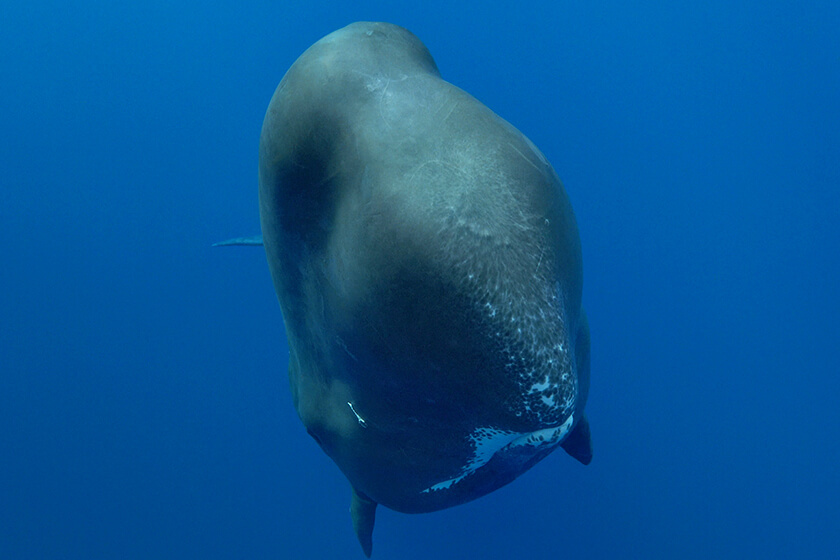Behaviors: Sleeping
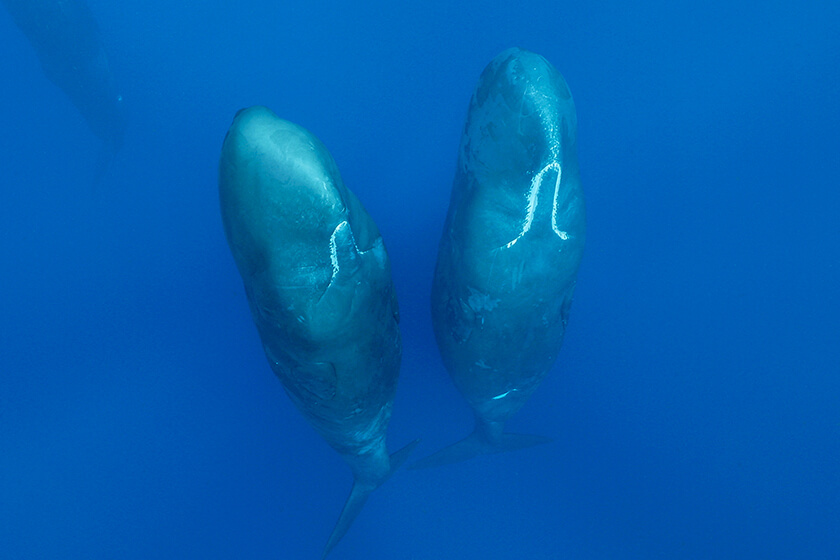
Sperm whales are among the least sleep dependent mammals on earth, spending only 7% of their lives asleep. When, where, and how long they sleep on a daily basis depends largely on the success of their hunting activities but is also subject to other factors. Social units may require more sleep to recover after traveling long distances between food sources, or they may shorten sleep cycles to avoid predation and other environmental threats.
When circumstances permit, the whales will settle and sleep for periods of three to four hours or longer, resting in place and peacefully drifting with the current as a group. Adults can hold their breath for over an hour when resting while juveniles breathe more frequently. The calves surface for fresh air approximately every 15 minutes.
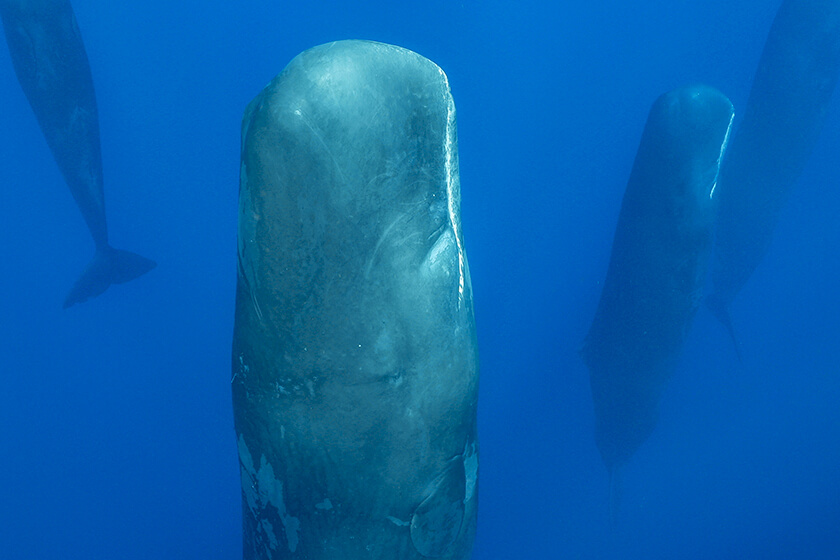
If a social unit is rearing small calves, the whales will often satisfy their sleep requirements by taking a series of short naps, relocating after each brief period of repose. Members of the group will dive down, assume a vertical position for 10 – 15 minutes, and slowly surface to leisurely swim for several hundred yards where they resume slumbering. They may repeat this pattern for several hours.
Sperm whales situate themselves at depths ranging from 10 – 50 ft when they sleep, as it is critical that they remain close to the surface. The breathing function for whales is under voluntary control of their central nervous system. Each breath is drawn by conscious choice so they must ensure that their airsource is closeby and their blowhole is positioned above water whenever they require air. Sperm whales sleep with their noses angled up and towards the surface to facilitate quick relief when they feel the need to breathe. Family groups with small calves remain even closer to the surface during sleep cycles to accommodate the limited breath-hold capacity of the calves.
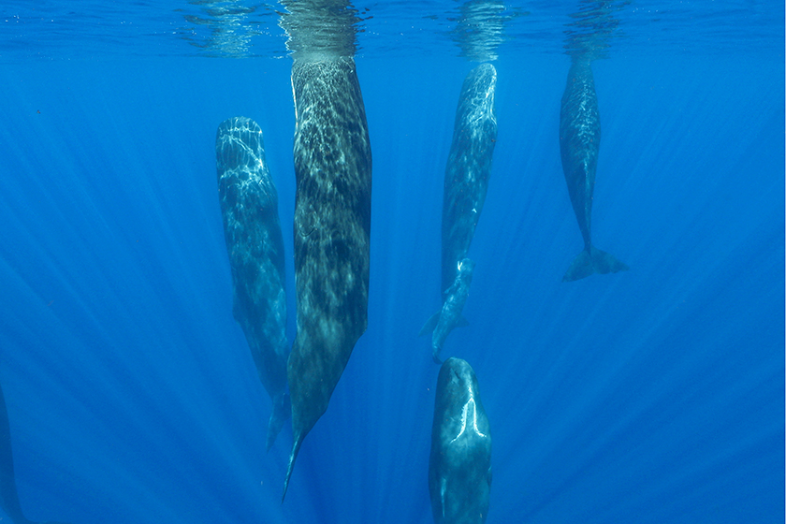
Social units sleep in loose, columnar groupings with each whale assuming a vertical position in the water. To begin their sleep cycle they usually dive from the surface in a head-down position, slow to a stop, and within moments will invert their bodies to hover in place with their heads up. This upright positioning may help them avoid predators since the whales present a very small contour when viewed from below. The columnar formation also allows them to maintain close social contact.
The whales make very little motion while asleep as they drift in formation with the ocean current. Their pectoral fins lay flat against their sides, and slight adjustments to their depth are achieved with a subtle flex of their flukes. Both eyes are closed when they sleep, and they will occasionally exhale a small stream of bubbles.
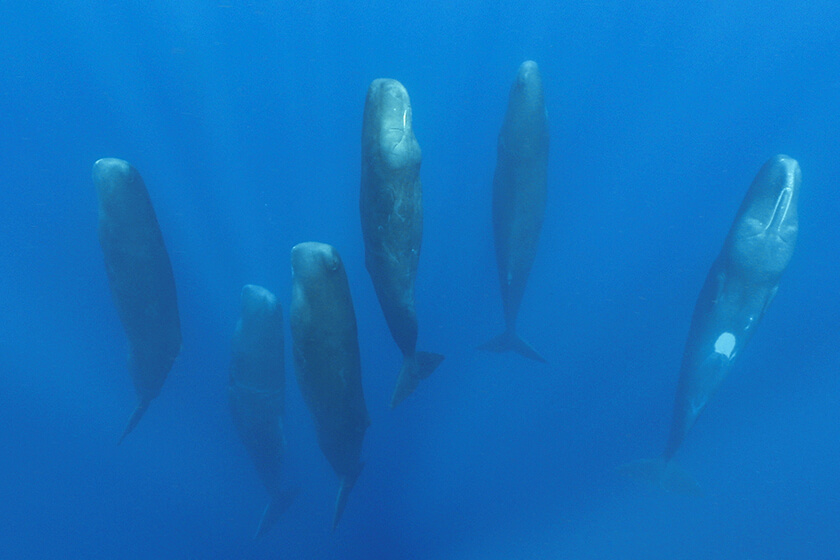
Their ability to hold a stationary, head-up, vertical position for long durations is due to the internal structure of their bulbous heads which contain massive air-filled sinuses and an abundance of spermaceti oil. This waxy substance is believed to play a key role in controlling their buoyancy. The anterior portion of the whale is likely to be more positively buoyant than the posterior end which consists largely of heavy, dense muscle and bone. The difference in density would make it easier for a relaxed, passive whale to naturally assume a head-up posture in the water column.
Adult sperm whales will sleep motionlessly in place like large underwater pillars while the calves and juveniles are more restless and active. The youngsters often spiral, bob, and play at or near the surface as the elders sleep nearby. Young calves settle close to their mothers during naptime but grow bolder and more adventurous as they mature. They entertain themselves by playing with other calves and juveniles if there are multiple youngsters in a social group. While the adults may appear to be fast asleep, one or more of them is at all times vigilant to ensure the safety of the group.
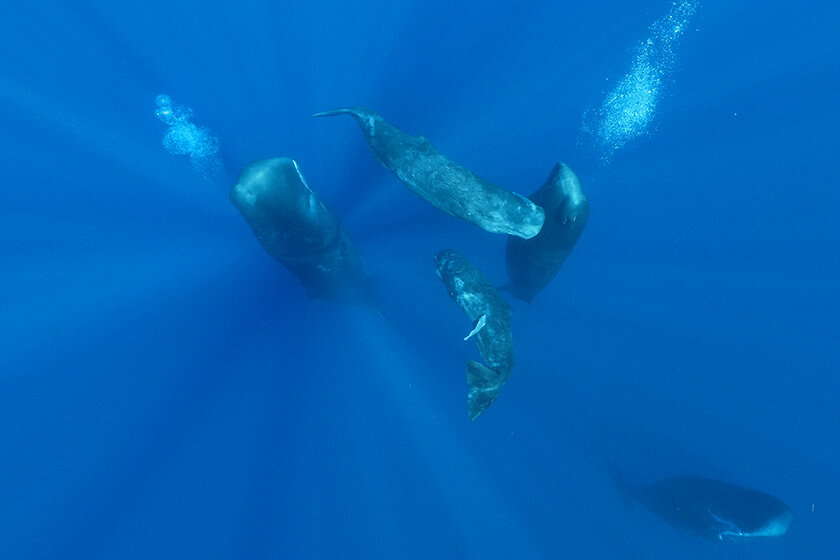
Some social units will combine with other family groups during sleep or socialization periods. Families who get along well and spend time together are called bond groups. During sleep cycles, the addition of more adults and young whales proves advantageous to all. There is greater safety in numbers, and the calves have a larger assortment of playmates.
While sperm whales will sometimes log at the surface to rest, whether or not they sleep in this position remains a mystery. They may simply be relaxing in a quiet, meditative state as they replenish their lungs with fresh air.
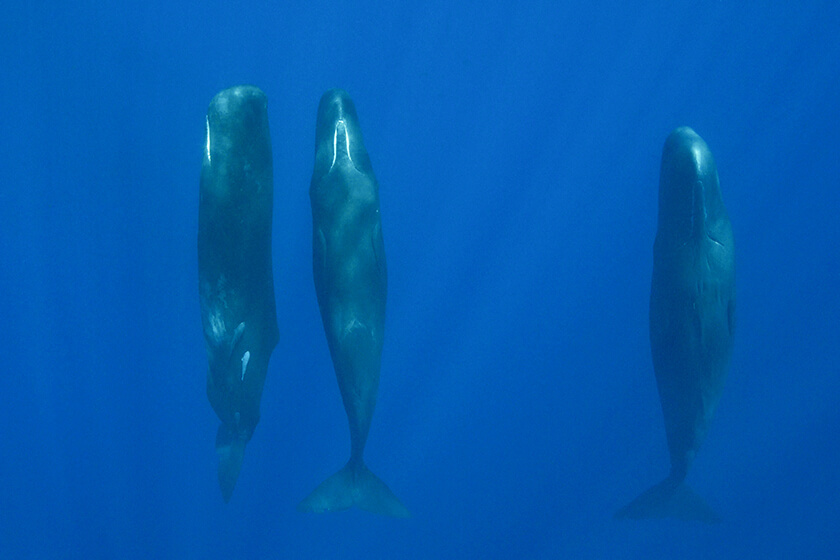
Boating encounters with sperm whales in other parts of the world suggest that they enter a deeper sleep and exhibit less acute awareness during sleep compared to other cetaceans. The whales we have observed in Dominica appear to sleep soundly, however they maintain an alert awareness of their environment. Pods of orcas and pilot whales are common visitors to Dominican waters. Also, the proliferation of cruise ships, ferries, whale watching, fishing, and research boats that frequent the area probably contributes to the whales’ heightened awareness of their surroundings while asleep.


